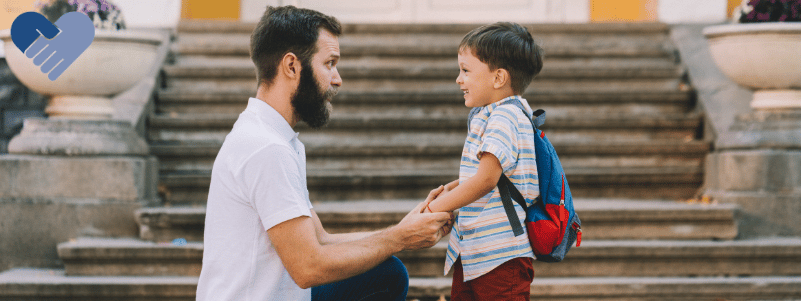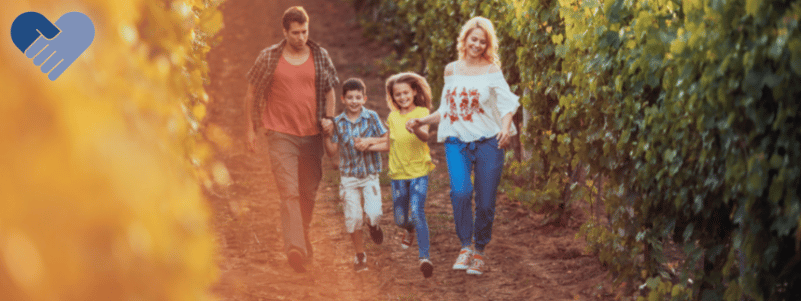Search by category, archive or keyword

The debate rages on as to whether or not drug addiction and alcoholism is a disease. Many well-known and respected experts make excellent arguments in favor of the disease and non-disease concept.
Family First Intervention does not take a position on the disease model. We try to help families understand what we have seen and witnessed in the lives of those broken apart by addiction. In almost every family we meet, we see Family of Origin Dysfunctions and Learned Behavior passed down from generation to generation.
Family of Origin Dysfunctions and Learned Behavior is the other side of the argument debating the disease concept. An onlooker can argue that because addiction runs in the family, it must run in the family’s bloodline and DNA.
Since nobody has proven the genetic disease theory nor have they found the gene, we look at the behavioral dysfunction that passes from generation to generation when drug addiction and alcoholism are present.
An addict’s presence affects children and is a strong predictor of whether or not a child becomes a substance user or develops a mental disorder. It also contributes to children developing unhealthy family roles to adapt to the dysfunction they are witnessing, a harsh example being physical abuse.
Not many people validate the abuser as having a disease inherited through family DNA. Many physical abusers have witnessed physical abuse in their homes as children and acted out the behavior and dysfunction as adults.
Regardless of whether substance use is a disease when addiction is present in the home, there are effective strategies and solutions to bring the substance user and their affected family members back to health.
Family First Intervention stays out of the disease model debate. We focus our energy and attention on helping the families and their loved ones affected by substance use and search for effective intervention strategies to improve the situation.
The hardest part is when the family refuses to intervene or provide assistance to the substance user when we see that children are involved and negatively affected. If the substance user’s family is not going to do an intervention for themselves or the addict or alcoholic, please do it for the children caught in the middle.
When the family and the substance abuser work together, they can help stop the ongoing dysfunction and help the children affected sooner rather than later to rewrite their story into adulthood.
“One of our main intervention goals is to bring both the family and the substance user into recovery. In doing so, we help form a new path for those affected by the addiction and to stop the generational dysfunction largely responsible for the current situation”.
In this blog, we’ll be looking at:
- How substance abuse affects childhood development
- Psychological effects on the children of substance users
- Factors that put children at a higher risk for alcohol and drug use
- How to help children of addicts and alcoholics and lower their risk of future alcohol and drug use
How Does Substance Abuse Affect Childhood Development?
Before we get into any detail on this subject matter, it is important that Family First Intervention provides a clear understanding of who we are and are not.
We are not child psychologists, nor are we child psychiatrists.
We are expert witnesses on the effects of drug and alcohol addiction and the problems it causes to adult substance users, their children, and their families. Every day we witness the impact addiction has on the children of the substance users we treat and who have grown up in an environment where drug and alcohol use is present. The effects we have witnessed on these children are nothing short of devastating.

Many families honestly believe that the addiction is not affecting the children to the actual level that it is. Others believe in the myth that the children won’t remember or are resilient and will grow out of what they have been part of. Although there may be rare exceptions to these beliefs, from our viewpoint and professional background, this is simply not true.
When we perform interventions, we see children developing textbook dysfunctional family roles in the early stages of development. We also see the effects of these untreated roles in the adults in the intervention who witnessed addiction as children themselves. Both children and adults are greatly impacted by addiction and can benefit from addressing how the addiction and Family of Origin Dysfunction have affected them.
Children need love, attention, and affirmation, to name just a few things important to their development. When an addiction is present, these things are lost as the result of the substance use and also from the rest of the family, whose attention is consumed by the substance user, ensuring that the child is the one who ends up suffering most.
When the child is not receiving the attention they need and deserve, they start to develop maladaptive behaviors and coping skills. What happens far too often is they act out behaviorally while some are diagnosed and misdiagnosed with mental disorders and put on prescription medications.
Sadly, there are more people than not who will read this and say, “How dare you make such an accusation,” and that they or the substance user are always there for their kids.
The answer is simple: being present physically doesn’t mean you’re present emotionally. Being present physically overlooks the tension, stress, and negativity the child feels from the effects of addiction without a word ever being spoken. Children pick up on these behaviors, and they know when something is wrong.
“When all of the attention of the substance user is directed towards alcohol or drug use, and all of the attention of the family is directed towards the substance user, it is the children who suffer the most.”
Psychological Effects on the Children of Substance Users
Children and young adults growing up in a home with parents who abuse drugs or alcohol are at a much higher risk of acquiring behavioral problems and becoming substance users themselves. Drug and alcohol prevention experts would classify these children as “high-risk” potential.
Children living in a home with drug addiction and alcoholism may be at a disadvantage due to economic struggles, social dysfunction, and a lack of support within their home and community.
High-risk children are far more likely to engage in the following types of behavior early, all the way into adulthood:
- Alcohol or drug addiction
- Violence
- Anger and resentment
- Difficulty forming relationships and bonds with others
- Problems at school, including delinquency and poor grades
- Dropping out of school
- Diagnosis or misdiagnosis of mental disorders
- Early sexual encounters
- Poor choice of significant other later in life (very common to seek alcoholics or drug addicts as future partners)
- Rebellious behavior
- Forced into adulthood trying to take on the role of parent or parents who are habitually impaired
- Seeking unhealthy relationships
- Acquiring maladaptive coping skills
- Falling into and sometimes cycling through dysfunctional family roles
- Taking on the hero role as an overachiever and perfectionist to compensate for the lack of attention
- Becoming a martyr or a professional victim
- Becoming a lost child and isolating yourself
- Falling into a scapegoat role using bad behavior and a poor choice of friends to attract attention toward themselves
- Acting out as the mascot of the family and using humor to hide behind the pain
- Suicide
In our experience, children who are impacted by an environment of drug or alcohol use acquire unhealthy thoughts and behaviors. As stated earlier, we often see the effects of early childhood trauma that is associated with having witnessed drug and alcohol use in adult substance users as well as family members we encounter during an intervention.
When a parent consumes drugs and alcohol, and the other parent is either consuming drugs and alcohol or codependently giving all of their attention and energy to the substance user, the children suffer. When children miss out on the attention, love, affection, and affirmation they deserve, this greatly impacts their lives and affects them into adulthood.

One of the most psychologically damaging effects we see on children is the feeling of abandonment or feeling unloved. Children often cannot rationalize that the lack of attention is not personal. In other words, the child cannot identify that their parents are not intentionally hurting them by neglecting them or diverting their attention elsewhere.
Most children take the dysfunction as being personal. As a result, many children who have grown up in alcoholic, drug-addicted, or dysfunctional homes have relationship issues later in life. Some choose partners who have addiction issues and become severely codependent martyrs as a result. Others have a hard time forming healthy relationships in general.
It is not uncommon for children who grew up in a home with addiction to feel unsafe and unwilling to be vulnerable in a relationship. In speaking with some of them, they suggest they were never in a relationship where they would let the other person fully in, nor would they allow themselves to be put in a position of being rejected or hurt by the other person.
In summary, children who experience addiction early on often have an exit strategy in their future relationships so they can get out before they let the other person in or before the other person can hurt them.
On the other hand, some children go in the opposite direction and have codependency concerns in future relationships. They may seek a substance user they can somehow control, manage, or fix themselves. Some may develop a dependent personality disorder.
If anyone reading this is offended by our suggestion that the children were abandoned or neglected, let us clarify our point:
This isn’t about you, nor about what you think you or your loved one has done that may or may not affect the children. It is about how the children are affected and how they take on these feelings and acquire the beliefs they carry into adulthood.
Only a selfish person would believe that children in a home of alcohol or drug addiction are being provided a healthy and loving environment simply because you think they are and believe their resiliency will empower them through and protect them from traumatic experiences.
We are on the front lines with these children and the adults who went through this as children; they tell us how devastating an experience it is or was.
“A Righteous Person is one who lives for the next Generation.”
– Dietrich Bonhoeffer
Factors That Put Children at a Higher Risk for Alcohol and Drug Use
Some of the biggest causes of early-onset drug or alcohol use are preventable. Primary prevention is much easier than secondary and tertiary prevention, which we will discuss in the next section. There are many factors that put children at risk.
This article focuses on the risks as a direct result of a parent or parents, caregivers, or other close family members whose drug and alcohol use affects children. When the following occurs, children under the age of 21 are at the greatest risk when:
- A parent, primary caregiver, or a close family member uses drugs or alcohol
- Ineffective or absent caregiving
- Lack of attention, affirmation, attachment, and nurturing by family members such as parents or caregivers
- Little to no parent or caregiver supervision
- Witnessing alcohol and drug use as well as having easy access to alcohol and drugs
Many of these factors cause a change in the child’s behavior, and the child acts out as a result. As stated earlier, many family members either do not think the children are as affected as they are or selfishly comment on how the child will be fine.
“Many families who call us about their loved one using drugs or alcohol try to claim their loved one loves their children and would do anything for them. There may be some truth to that, supposing as long as one of those things isn’t quitting drugs or alcohol.”
The bottom line is that anytime there is a drug or alcohol problem that affects children, the children become secondary and are greatly affected by the experience. The longer a family thinks the problem for the substance user and the affected children are not that bad, the worse it gets for everyone.

Interventions are beneficial to stop the situation before it gets worse than it already is. The longer the addiction is allowed, the greater the negative impact on the children, family, and the substance user. It is much easier to prevent addiction than it is to treat an addiction.
That said, families who call us are always calling to treat an existing addiction with a loved one. In doing so, you can possibly prevent a future addiction by stopping the dysfunction being witnessed directly or indirectly by the children of the substance user.
Intervention can also help prevent negative behavior, maladaptive coping skills, and health problems in children with a parent, caregiver, or close family member using drugs or alcohol.
How to Help Children of Addicts and Alcoholics and Lower their Risk of Future Alcohol and Drug Use
An intervention is any strategy used to address a problem or crisis to improve the situation. Unfortunately, our interventions are on substance users long after they start abusing drugs and alcohol.
Although the opportunity to offer early prevention strategies has passed for them, it is not too late for the children or other family members affected by the addiction to improve their mental state before they possibly follow in the footsteps of the substance user.
The number one way to lower the risk of future alcohol and drug use is an intervention on the current drug or alcohol use of the impaired parent, caretaker, close family members, or siblings.
When you intervene with an active substance user, you offer them the opportunity to improve their life and those around them directly and indirectly affected by the substance use. When an intervention is done on a substance user, it can contribute to the three forms of prevention:
- Primary Prevention – This prevention method is executed before any negative behaviors or substance use has started. When doing an intervention on an adult substance user with children, you are also delivering primary prevention efforts.
- Secondary Prevention – When drug or alcohol use with negative behaviors has already started, it is believed there is still an opportunity to stop the substance use and negative behaviors. Since most people do not do an intervention until the situation is very bad, an intervention for a substance user can be an effective prevention strategy for the children of the substance user who is already acting out or exploring and experimenting with drug or alcohol use.
- Tertiary Prevention – Unfortunately, this is when all of our calls typically come in; alcohol and drug use is in full swing, and the efforts are directed at reducing future harm to the substance user and their family.
The long and short of it is that most people wait until things are dire for the substance user before considering an intervention. The same people are unaware of how badly the children are being affected by the addiction of their parent, caretaker, sibling, etc. The quicker a family intervenes on the active substance user, the more excellent the opportunity to stop the Family of Origin Dysfunction that will carry into the affected child’s adulthood.
Children whose parents, caregivers, siblings, or other close family members are using drugs or alcohol are at an enormous disadvantage and at an extremely high risk of developing a substance use or mental disorder.
Factors that can protect children against developing a substance use or mental disorder include:
- Intervention on the impaired parent, caretaker, sibling, or close family member as soon as possible
- A sober parent that is involved in the child’s life
- Strengthening of family bonds (This requires a sober family)
- Present emotionally attached family members
- Affirmation and recognition of the child’s qualities
- Engagement in the child’s activities
- Rules and discipline in the home
- Parents who are on the same page and not constantly at odds with each other (This happens a lot when one or both of the parents are impaired)
- Children protected from witnessing drug or alcohol use in the home
- Children witness parents and other family members who love and care for each other
Never underestimate the power addiction has in the home. The tension that exists as a result of a substance use disorder can be cut with a knife. Too many families do not see it and validate the substance user as still being present at home despite the alcohol or drug use.
Say what you want; the children feel it, see it, and are greatly impacted by it. Being physically present is not the only thing that makes you an effective parent; it requires being present emotionally too.
It’s Never Too Late to Do an Intervention
When the well-being of an individual is at stake, it is never okay to choose inaction as a solution. If the family is not interested in helping the substance user particularly, then at least do the intervention for the well-being of those the substance user affects.
Above all, please do not hide behind the belief that the children are not being affected or that the substance user is fully loving their children; this is simply not true. They may have, at some point, been a good dad or mother, and maybe they still are or are trying to be on some level.
In our experience, you cannot love another person when you do not love yourself, especially when your primary love is drugs or alcohol. Even if it were possible to love others in this altered state, other people, including children, will ultimately take a back seat to the selfishness of addiction.
“Never, never be afraid to do what’s right, especially if the well-being of a person or animal is at stake. Society’s punishments are small compared to the wounds we inflict on our soul when we look the other way.”
― Martin Luther King Jr.
An intervention is not about how to control the substance user; it is about how to let go of believing you can.
“The most formidable challenge we professionals face is families not accepting our suggested solutions. Rather, they only hear us challenging theirs. Interventions are as much about families letting go of old ideas as they are about being open to new ones. Before a family can do something about the problem, they must stop allowing the problem to persist. These same thoughts and principles apply to your loved one in need of help.”
Mike Loverde, MHS, CIP

